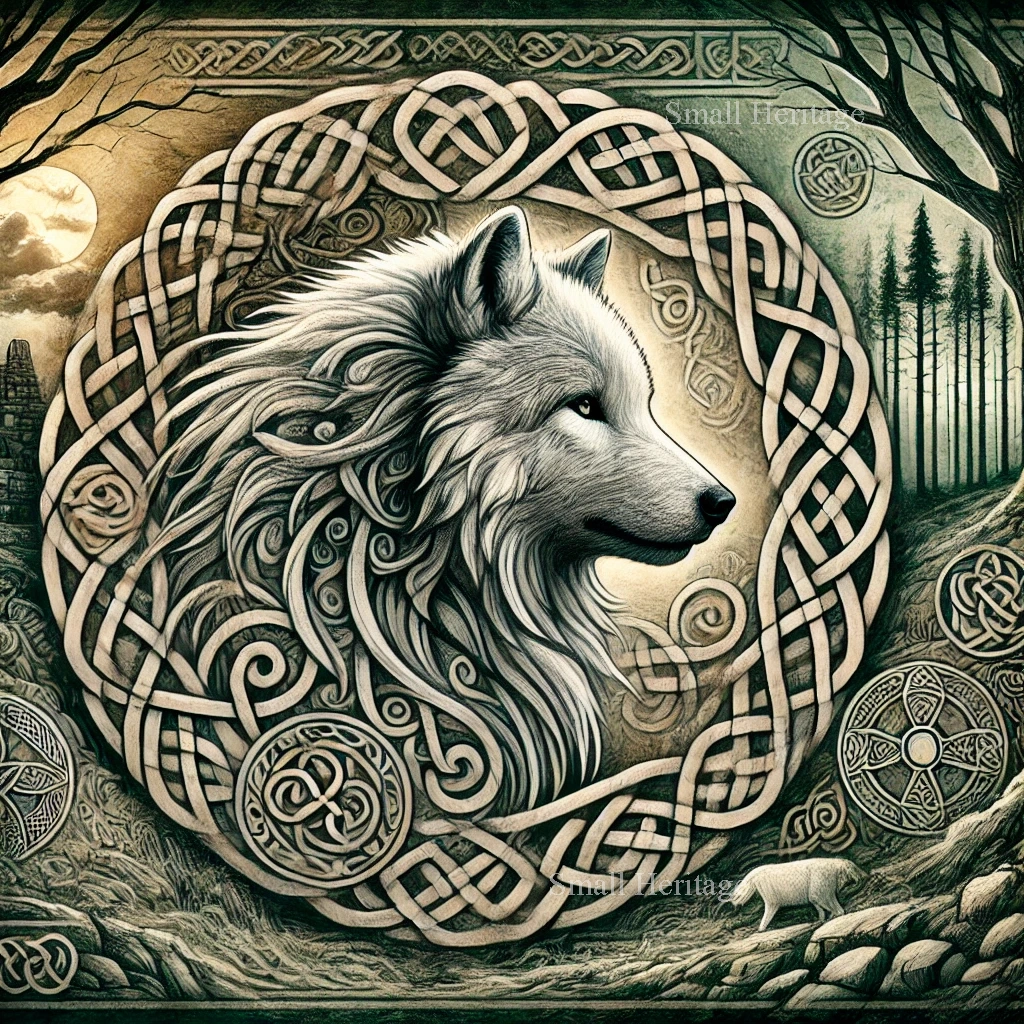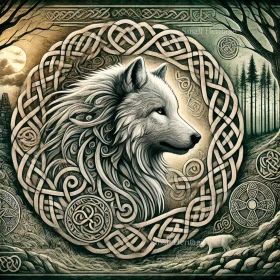
-
Shop by Type
-
Shop by Culture
-
Collections
Home » Blog » Cultural Heritage » The Celtic Wolf: Symbolism, Mythology, and Cultural Significance

Wolves have long been revered and feared across various cultures, and in Celtic mythology, the wolf holds a particularly significant place. Known for their strength, cunning, and connection to the wilderness, wolves were seen as powerful symbols by the ancient Celts. In this post, we explore the deep-rooted symbolism of the Celtic wolf, its place in mythology, and how it continues to influence modern culture.
In Celtic mythology, the wolf was often associated with the wilderness, hunting, and war. The Celts, who were deeply connected to nature, viewed wolves as both protectors and harbingers of death. Wolves were revered for their hunting prowess and their role as apex predators in the natural world.
One of the most famous tales involving wolves in Celtic lore is the story of Cú Chulainn, the legendary warrior of Ulster. Known as “The Hound of Ulster,” Cú Chulainn is often depicted with a wolfhound, symbolizing his connection to both the domestic and wild aspects of the animal world. While wolves were sometimes feared for their predatory nature, they were also respected as symbols of bravery and protection in battle.
The wolf also appears in various Celtic legends as a guide for warriors, leading them through the dangers of the wilderness and into battle. This duality of the wolf—as both a feared predator and a respected guide—reflects the Celts’ complex relationship with the natural world.

The Celtic wolf symbolism is rich and multifaceted, reflecting the qualities that the Celts admired in these creatures. Wolves were seen as symbols of strength, loyalty, and perseverance. In Celtic culture, the wolf was also associated with the warrior class, embodying the ideals of courage and protection.
The wolf’s role as a hunter made it a symbol of sharp instincts and survival. The Celts believed that the wolf’s keen senses and ability to navigate the dark forests were qualities that could be harnessed by warriors and hunters alike. As such, the wolf became a totem animal for those who sought to embody these traits.
Loyalty is another key aspect of Celtic wolf symbolism. Wolves are known for their strong social bonds and their loyalty to their pack. The Celts admired these qualities and saw the wolf as a model for human relationships, particularly in terms of loyalty to family and tribe. In this way, the wolf became a symbol of unity and strength within the community.
In addition to these qualities, the wolf was also a symbol of transformation and change. The Celts believed that the wolf, as a creature of the wilderness, was closely connected to the cycles of nature and the changing of seasons. This made the wolf a powerful symbol of adaptability and resilience, qualities that were highly valued in Celtic society.
The influence of the Celtic wolf extends beyond mythology and symbolism into the realm of art and jewelry. Celtic artists often depicted wolves in their intricate knotwork designs, highlighting the animal’s importance in their culture. The interweaving patterns commonly found in Celtic art represent the interconnectedness of all life, with the wolf symbolizing the wild and untamed aspects of nature.
Celtic wolf jewelry is particularly popular today, with many pieces featuring the wolf as a central motif. These pieces often incorporate traditional Celtic designs, such as knotwork and spirals, to create a sense of continuity with ancient Celtic art. Celtic wolf pendants, rings, and bracelets are worn not only for their aesthetic appeal but also for the powerful symbolism they carry.
Wearing Celtic jewelry with wolf design is a way for individuals to connect with the spirit of the wolf, invoking its qualities of strength, loyalty, and resilience. These pieces serve as a reminder of the wearer’s connection to nature and the enduring legacy of Celtic culture.
The Celtic wolf continues to hold a place in modern culture, particularly among those who feel a connection to Celtic heritage or who are drawn to the symbolism of the wolf. In recent years, there has been a resurgence of interest in Celtic mythology and symbols, with the wolf often taking center stage.
This renewed interest in Celtic culture has led to the popularity of Celtic wolf tattoos, which are seen as symbols of strength, protection, and loyalty. These tattoos often incorporate traditional Celtic designs, such as knotwork and spirals, to create a unique blend of ancient symbolism and modern expression.
In addition to tattoos, the Celtic wolf has also appeared in various forms of media, including literature, film, and television. The wolf’s association with strength, loyalty, and the wilderness makes it a compelling symbol for stories that explore themes of survival and transformation.
The Celtic wolf remains a powerful symbol of the qualities that the Celts admired in these majestic creatures. From its role in mythology and art to its influence in modern culture, the wolf continues to captivate and inspire. Whether through Celtic wolf jewelry, tattoos, or stories, the legacy of the Celtic wolf endures, reminding us of our deep connection to the natural world and the timeless values of strength, loyalty, and resilience.
As we continue to explore and celebrate Celtic mythology, the wolf stands as a testament to the enduring power of these ancient symbols. By honoring the Celtic wolf, we keep alive the rich traditions and beliefs of the Celts, allowing their legacy to live on in our modern world.